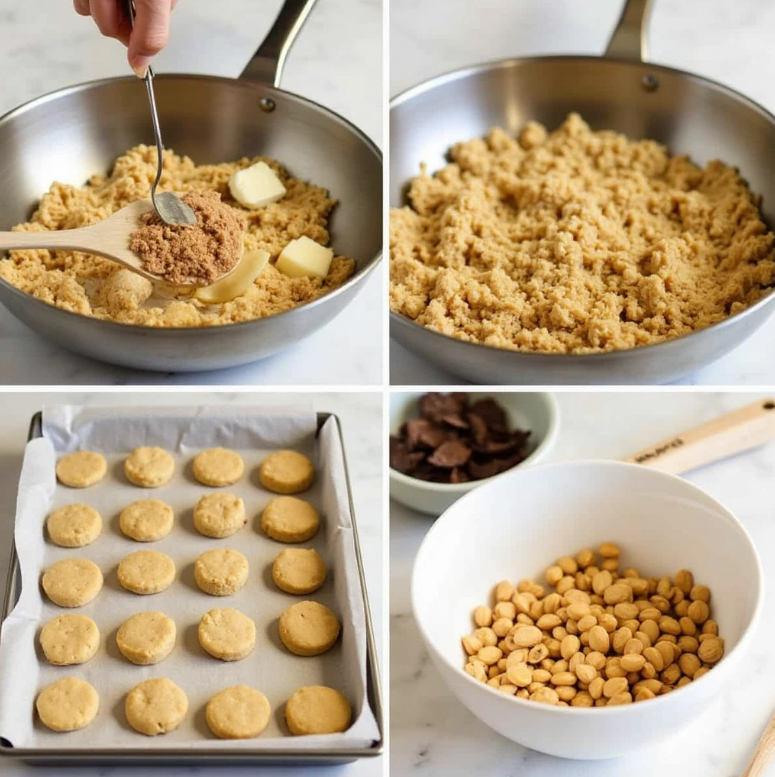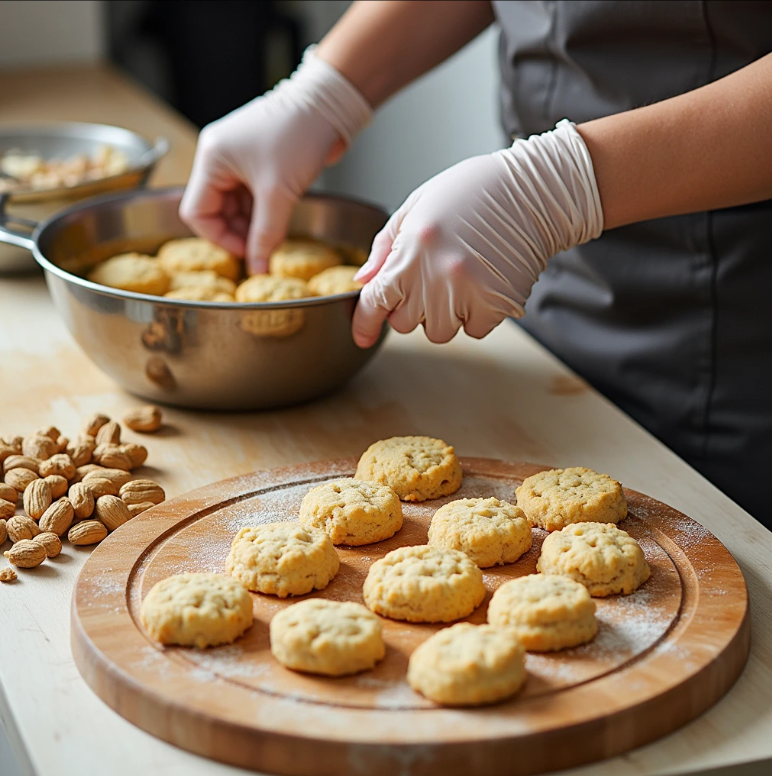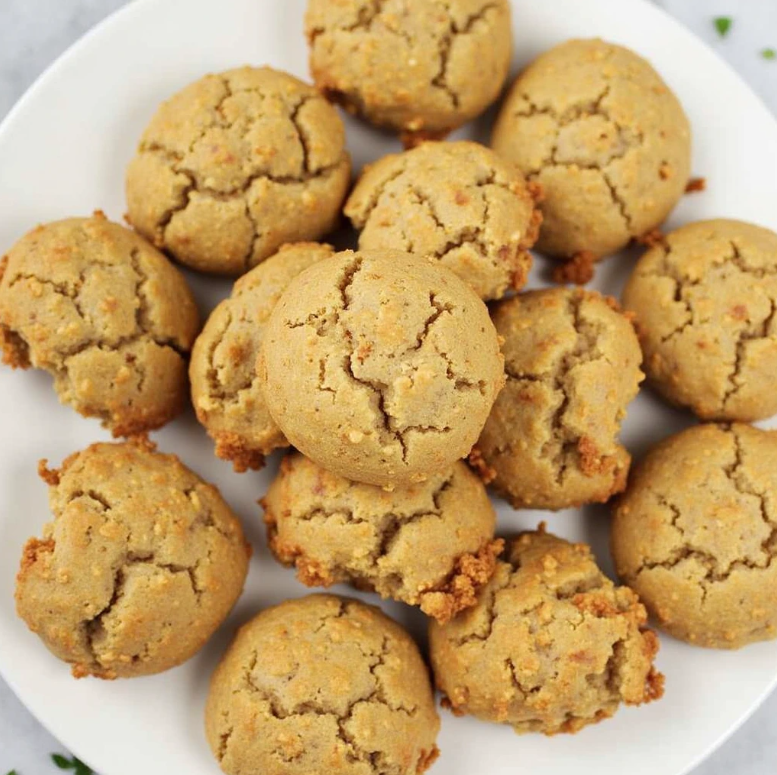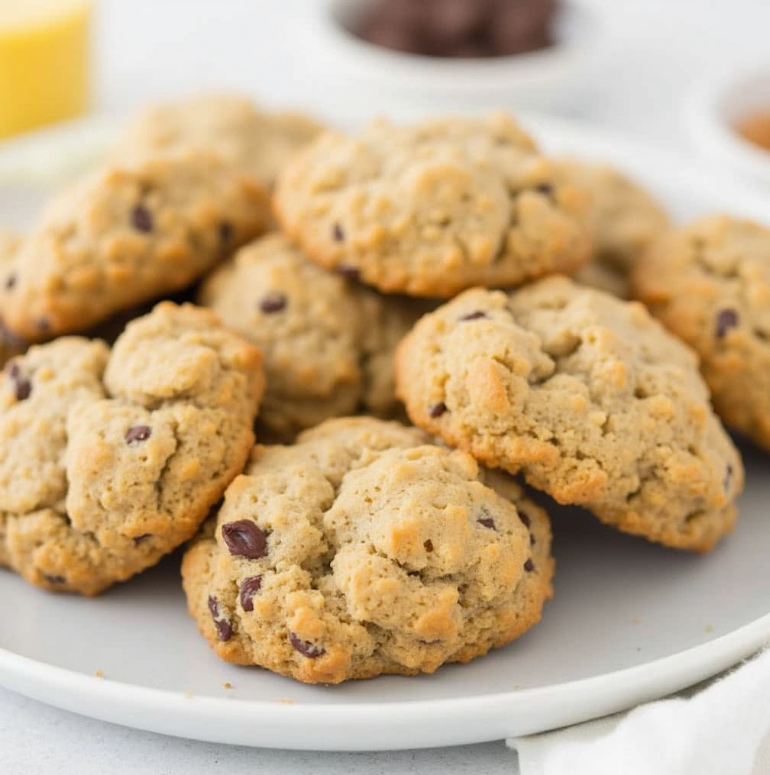Introduction
The popularity of gluten-free diets has increased the demand for delicious snacks that fit dietary restrictions. Gluten-free peanut biscuits are a standout treat. This article explains why these biscuits are not just tasty but also a healthy option for those avoiding gluten. We’ll also show you how to make these biscuits at home, so you can enjoy fresh, flavorful snacks anytime.
Ingredients in Gluten Free Peanut Biscuits
Selecting the right ingredients is key to making tasty gluten-free peanut biscuits. Start with a gluten-free flour blend, usually made from rice, potato, tapioca, maize, or buckwheat flour. Add finely chopped peanuts or natural peanut butter for flavor and crunch. Xanthan gum helps bind everything together, replacing the texture that gluten usually provides. Choose your sweetener—cane sugar, maple syrup, or honey—based on how sweet you like your biscuits. Finally, a pinch of salt brings out the flavors, and baking powder makes the biscuits light and airy.

- Flour: Rice, potato, tapioca, maize, buckwheat
- Peanuts: Chopped, or as natural peanut butter
- Binding agent: Xanthan gum
- Sweeteners: Cane sugar, maple syrup, honey
- Flavor enhancer: Salt
- Leavening agent: Baking powder
How to Make Gluten Free Peanut Biscuits at Home
Making gluten-free peanut biscuits is easy. Start by heating your oven to 350 degrees Fahrenheit and lining a baking sheet with parchment paper. Mix your gluten-free flour, baking powder, xanthan gum, and salt in one bowl. In another, combine peanut butter, your sweetener, and a beaten egg. Blend the wet and dry ingredients until you form a dough, then fold in chopped peanuts. Drop spoonfuls onto the baking sheet, flatten slightly, and bake for 10-12 minutes until golden. Let them cool on a rack before serving.
Health Benefits of Gluten Free Peanut Biscuits
Gluten-free peanut biscuits are healthy and great for a balanced diet. They are safe for people with celiac disease or gluten sensitivity, as they don’t cause harmful reactions. Peanuts in the biscuits offer healthy fats, protein, and fiber, which are good for heart health and help keep blood sugar stable. These biscuits also have natural ingredients that provide essential vitamins and minerals. By using natural sweeteners and less sugar, they can be a low-calorie snack, perfect for those watching their sugar intake. So, these biscuits not only taste good but also nourish your body.
Common Challenges When Baking Gluten Free Peanut Biscuits
Baking gluten-free peanut biscuits can be tricky, especially for those new to gluten-free baking. First, getting the right texture can be tough without gluten, as the biscuits might crumble or break apart easily. This problem can often be fixed by carefully adjusting xanthan gum and moisture in the dough. Second, the flavor can change a lot depending on the gluten-free flour blend used, as some might taste gritty or too strong. You may need to try different blends to find the one that enhances the peanut flavor best. Lastly, the dough spreading during baking is another issue; cooling the dough before baking can help keep the biscuits’ shape and texture.

Store-Bought vs. Homemade Gluten Free Peanut Biscuits
When comparing store-bought and homemade gluten-free peanut biscuits, several factors matter. Store-bought biscuits are handy and consistently good in quality and taste. Yet, they might have preservatives and artificial ingredients that some people want to avoid. They can also cost more per serving than homemade biscuits. On the other hand, making biscuits at home lets you control what goes into them. You can adjust the sweetness, choose the flour, and add extras like chocolate chips or dried fruit. Baking at home is also enjoyable and gives you fresher, more tailored snacks. In the end, whether you buy or make your biscuits depends on what you value more: convenience, cost, diet needs, or flavor.
Best Ways to Enjoy Gluten Free Peanut Biscuits
Pairing with Beverages
Gluten-free peanut biscuits are delightful when enjoyed with a cup of coffee or tea. The warmth and slight bitterness of these beverages enhance the nutty, sweet flavor of the biscuits, making the overall taste even better. This pairing is ideal for a relaxing morning.
As a Dessert Base
These biscuits excel as a versatile base for creative desserts. Crushed gluten free peanut biscuits make an excellent topping for yogurt or ice cream, adding a crunchy texture and rich flavor. They can also be used in pie crusts or as a crumble topping for baked fruit desserts.
Incorporating into Savory Dishes
For those who like a savory touch, adding gluten-free peanut biscuits to a cheese platter creates a wonderful contrast. The nutty biscuits go great with soft cheeses like brie or goat cheese, building a refined flavor mix that’s sure to delight guests at any event.

Convenient Snacking: A Perfect Gluten-Free Option
Gluten-free peanut biscuits are an excellent choice for snacking on the go. They provide a quick boost of energy and are satisfying without containing gluten, making them perfect for busy days or travel. Their easy-to-carry nature and delicious flavor make them a dependable snack choice for anyone, especially those following a gluten-free diet.
FAQs
Why is peanut butter not gluten-free?
Peanut butter is usually gluten-free because it mainly contains peanuts. However, some brands may add fillers or additives that contain gluten, or they might process the peanut butter in facilities that also handle gluten-containing products, leading to cross-contamination. Therefore, it’s essential to always check the label for a gluten-free certification to ensure safety, particularly if you have gluten sensitivity or an allergy.
Which supermarket biscuits are gluten-free?
Many supermarkets now carry a variety of gluten-free biscuits. Brands such as Schär, Glutino, and Pamela’s Products are well-known for their wide selection of gluten-free options, including biscuits. Also, many stores offer their own private-label products that are certified gluten-free, giving shoppers more choices. It’s crucial to read labels carefully to ensure the gluten-free status of any product.
What flour is best for gluten-free cookies?
For baking gluten-free cookies, almond flour, coconut flour, and oat flour are top choices because of their mild flavors and strong binding qualities. Almond flour brings richness and is easy to use. Coconut flour is very absorbent and gives cookies a light, airy feel. Oat flour, which is made from gluten-free oats, provides a comforting, familiar taste. Mixing these flours can also help balance both flavor and texture.
Which peanut butter brand is gluten-free?
Brands like Jif, Skippy, and Smucker’s provide gluten-free peanut butter, clearly labeled as such. These brands take steps to avoid gluten cross-contamination, making their products safe for people with celiac disease or gluten sensitivity. Always check the product labeling or visit the manufacturer’s website to get the most .
Conclusion
Gluten-free peanut biscuits are more than just a treat; they’re a wise choice for anyone who wants to enjoy a tasty snack that fits dietary needs. This guide not only shows you how to make them at home but also explains their health benefits and the best ways to enjoy them. Whether you choose homemade or store-bought, these biscuits offer fun and variety in your gluten-free diet. With the proper ingredients and methods, they can easily become a regular part of your snack choices.

